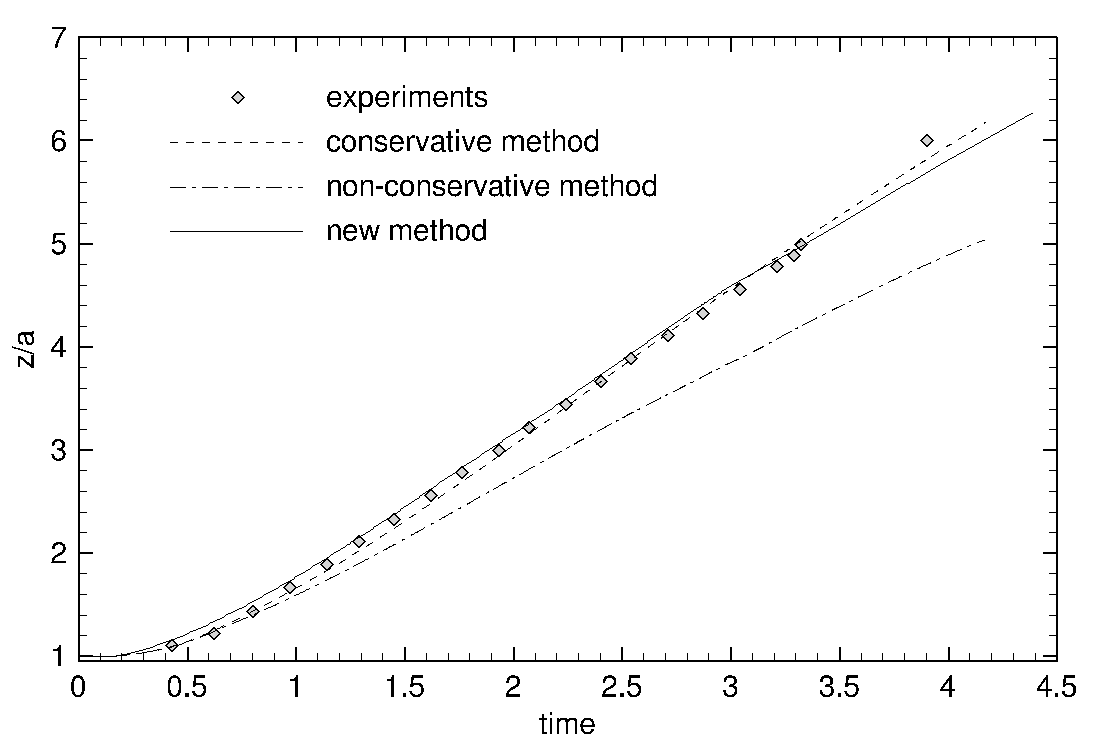Section: New Results
A sharp Cartesian method for incompressible flows with large density ratios
We have developed and validated a new Cartesian method for bifluid incompressible flows with high density ratios. The specificity of the method relies on a sharp second order numerical scheme for the spatial resolution of the discontinuous elliptic problem for the pressure, that was developed in [42]. The Navier-Stokes equations are integrated in time thanks to a fractional step method based on the Chorin scheme and discretized in space on a Cartesian mesh. The bifluid interface is implicitly represented using a level set function. The numerical tests show the improvements due to this sharp method compared to classical first order methods. As an illustration, we present here numerical results for the dam break test case.
This test case is studied in [53] and [41], and based on experiments conducted in [49]. The initial configuration is a water column at rest in air. The initial height and width of the column are both 5.715 cm. The domain size is 40 cm10 cm. The value of the physical parameters are
We present in Figure 14 the interface evolution at non-dimensional times , with the initial height of the water column. The computations are performed with points.
In Figure 15, we plot the evolution in time of the water front, compared to the experimental results of [49], and to the results obtained for the Ghost-Fluid method and the conservative method of Raessi and Pitsch [53]. We observe that the front propagation is in agreement with the experimental results and the results of the conservative method presented in [53]. It means that, though the method is not strictly conservative, the numerical errors due to momentum transfer across the interface are not large enough to slow down the propagation of the front. It is not the case for instance for the Ghost-Fluid method, as it can be noticed in Figure 15 and has been reported in [53].
|




